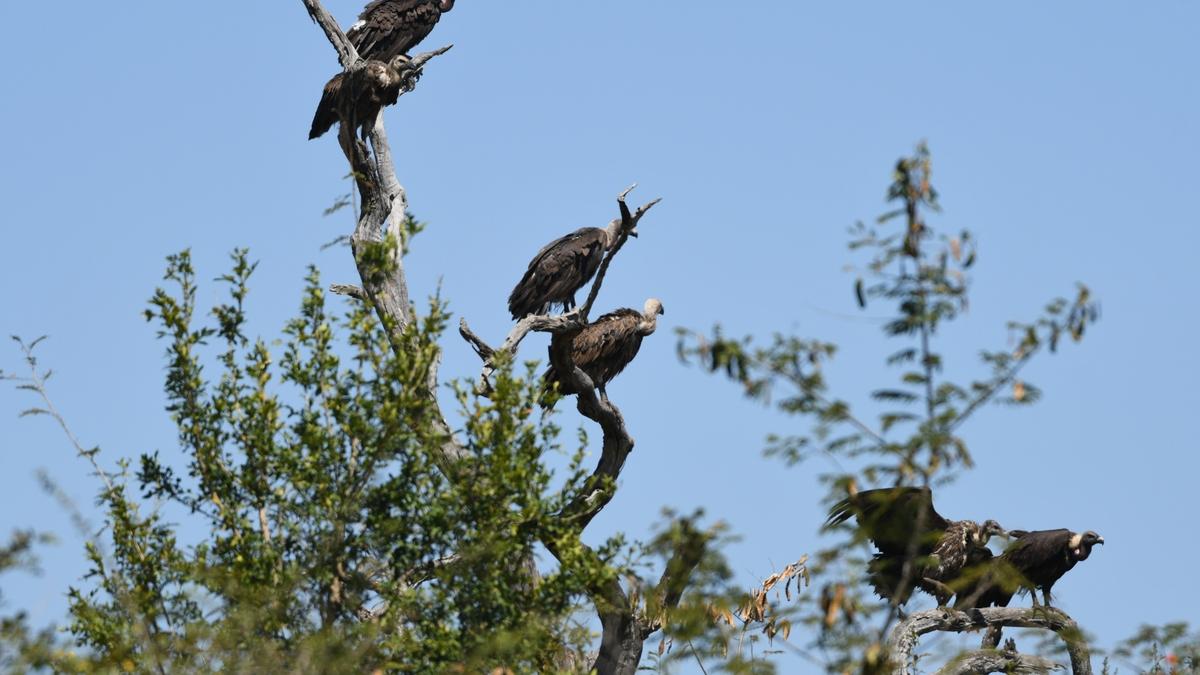Vultures and Public Health: Linking Conservation with Pandemic Preparedness

- 14 Sep 2025
Introduction
Vultures, often overlooked in mainstream conservation discourse, are vital ecological assets that deliver critical ecosystem services. As nature’s most efficient waste managers, they swiftly consume animal carcasses, thereby preventing the spread of deadly pathogens such as anthrax, botulism, and rabies. Their decline in South Asia, particularly in India, is not only an ecological concern but also a pressing public health challenge with implications for pandemic preparedness.
Ecological and Public Health Role
Vultures are unique as obligate scavengers capable of consuming large quantities of rotting flesh and bone. By doing so, they prevent the accumulation of carcasses that otherwise become breeding grounds for zoonotic diseases. Studies link the disappearance of vultures to rising cases of rabies and other infections, as feral dogs and rodents, which proliferate in their absence, act as alternative scavengers and reservoirs of disease.
The economic value of this “free service” is immense. Between 1993 and 2006, India’s vulture collapse—among the worst human-caused wildlife die-offs—was estimated to have cost the economy nearly USD 34 billion and indirectly contributed to around 50,000 human deaths due to rabies. This highlights the underestimated yet indispensable role of vultures in sustaining public health and economic stability.
India’s Vulture Crisis
India once hosted more than 40 million vultures, but populations crashed by over 95% since the 1990s, mainly due to the veterinary use of diclofenac, a drug toxic to vultures when ingested through livestock carcasses. Other threats include habitat loss, poisoning, and electrocution from power lines. Although the National Action Plan for Vulture Conservation (2016–25) sought to mitigate these risks, the species remains critically endangered.
The vulture decline demonstrates a direct link between biodiversity loss and increased pandemic risks. Carcass dumps once swarmed with hundreds of vultures, but today many remain unprocessed, heightening risks of disease spillover from animals to humans.
Regional Dimensions: The Central Asian Flyway
Vultures in India are part of the Central Asian Flyway (CAF), a migratory corridor spanning over 30 countries and connecting ecosystems across Asia. Poorly managed landfills, slaughter sites, and carcass dumps along this route can become hotspots for pathogen spillover. Thus, the CAF is not only a biodiversity corridor but also a public health corridor, demanding transboundary collaboration under regional and global frameworks.
Post-2025 Strategy and One Health Approach
As India prepares its post-2025 vulture conservation strategy, a shift from recovery to resilience is crucial. Key priorities include:
- Satellite telemetry to map habitats and carcass hotspots.
- A Decision Support System integrating wildlife, livestock, and health data.
- Embedding vulture conservation within One Health frameworks linking human, animal, and environmental health.
- Cross-border cooperation under CAF to align conservation with global health security.
- Community stewardship, empowering women, youth, and local groups in surveillance and awareness.
Such measures would safeguard vultures as keystone species while strengthening systemic resilience against pandemics at relatively low cost compared to outbreak responses.
Conclusion
Vultures exemplify the interdependence of biodiversity and human health. Their conservation is not merely an ecological obligation but a strategic investment in pandemic preparedness, public health, and economic security. By integrating vulture protection into One Health strategies and regional cooperation frameworks, India can lead in showcasing how biodiversity conservation can double as a frontline defence against future health crises. Protecting vultures, therefore, is not just about saving a species—it is about safeguarding humanity itself.
